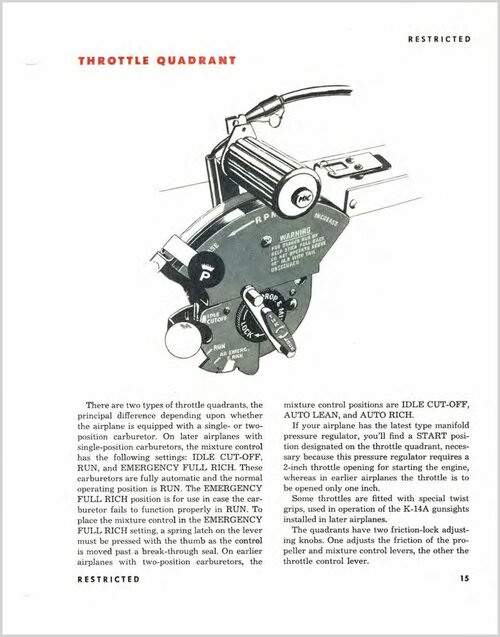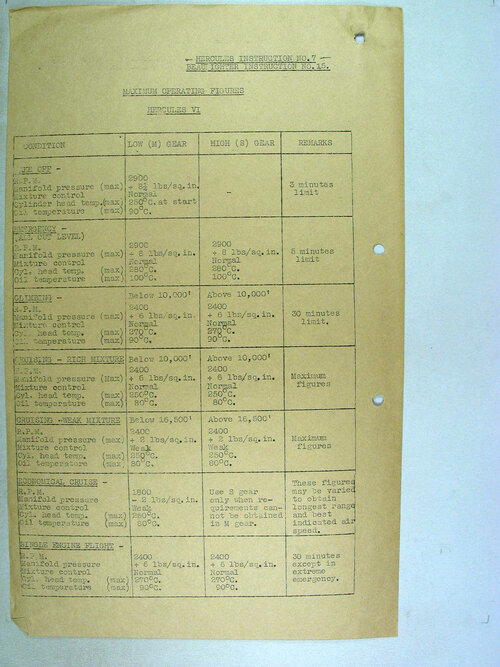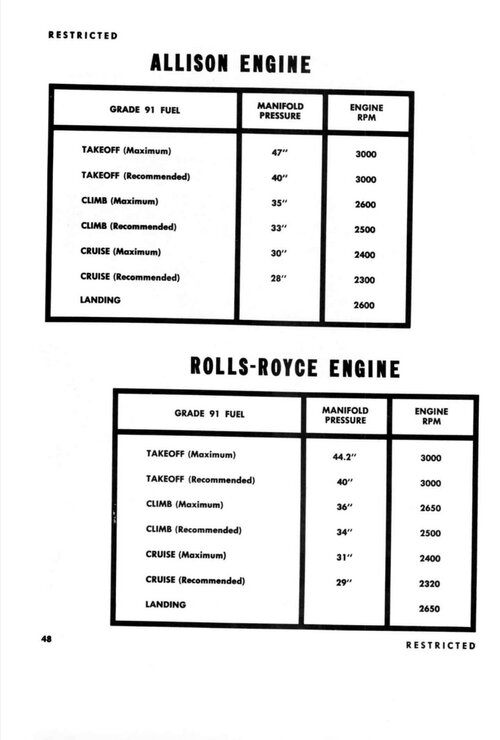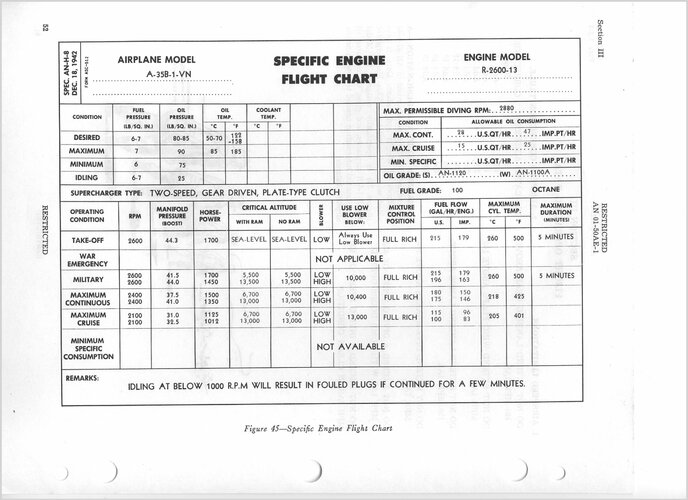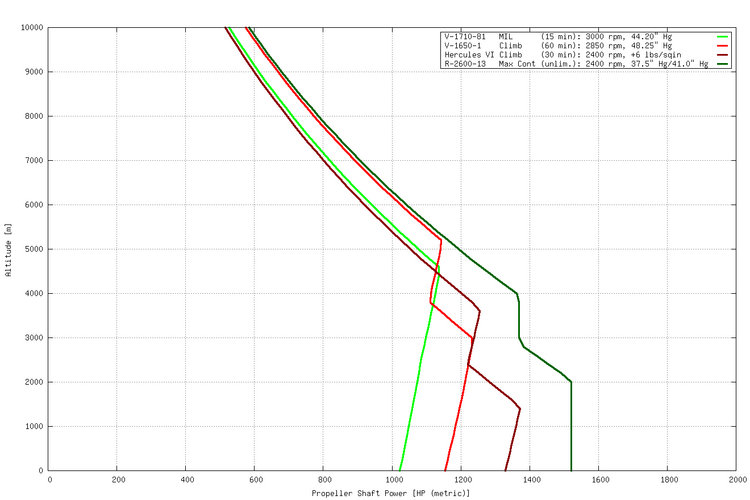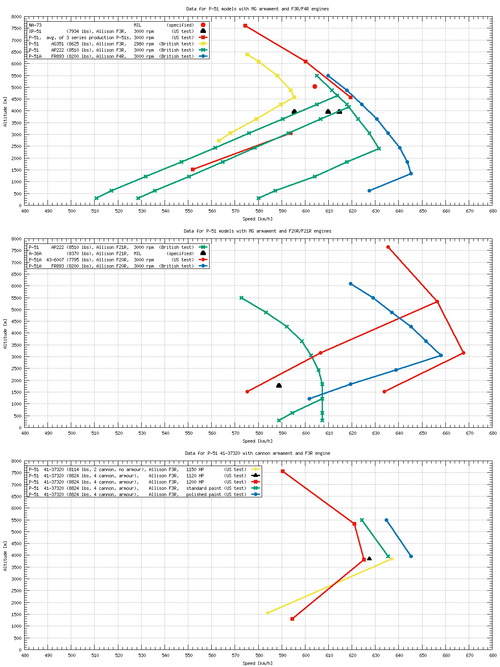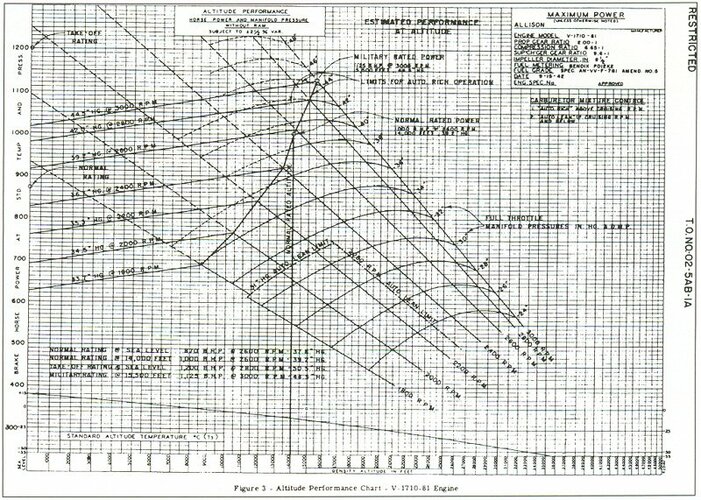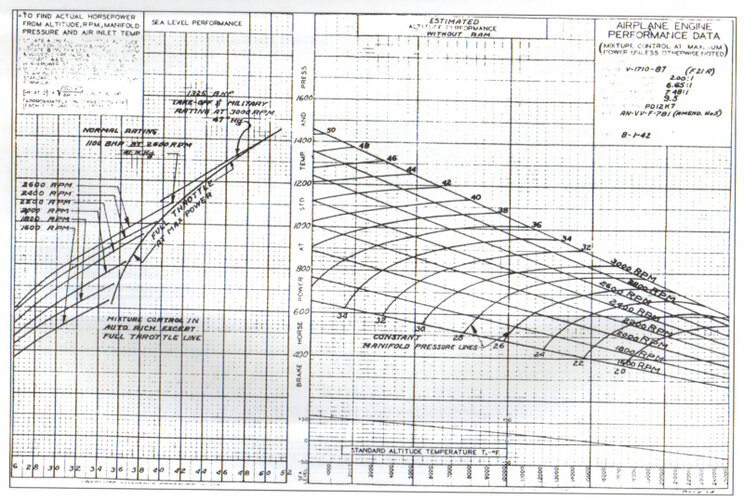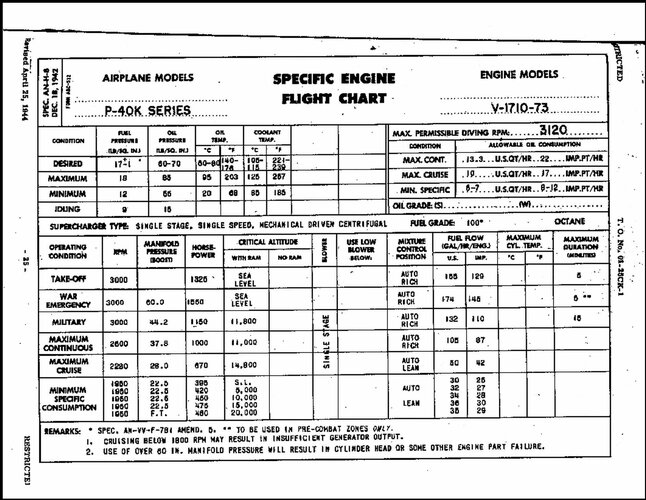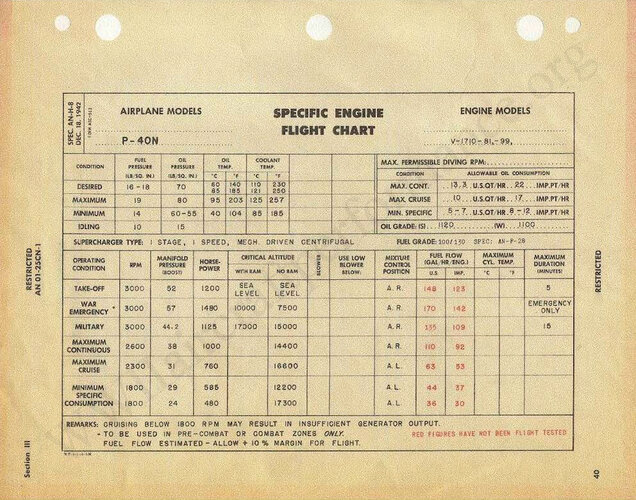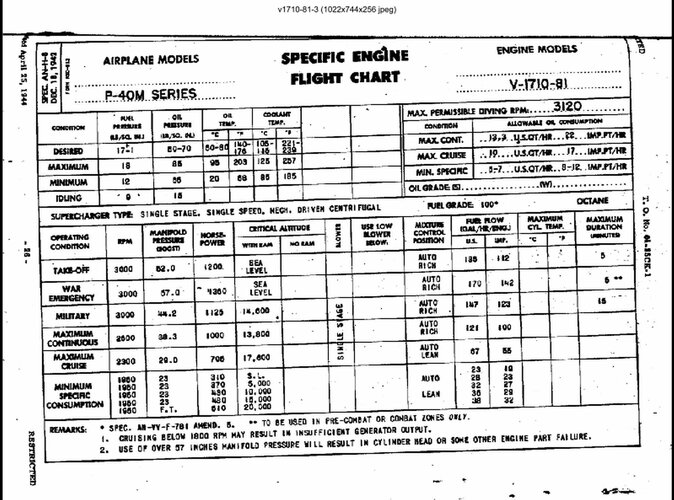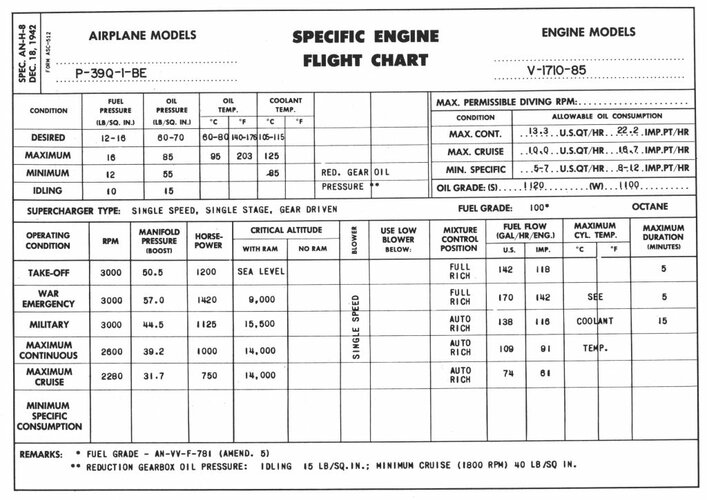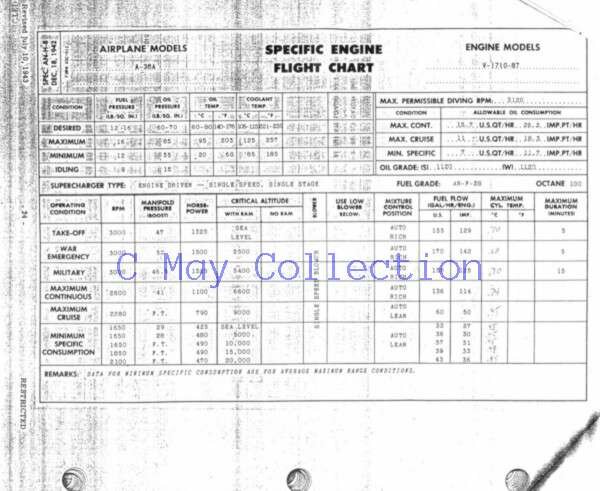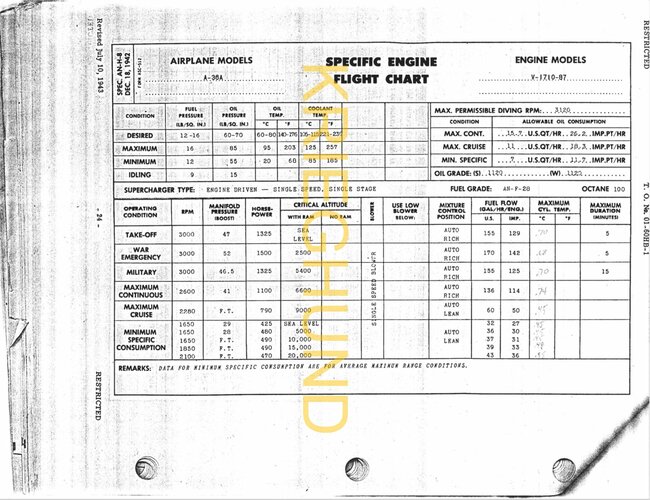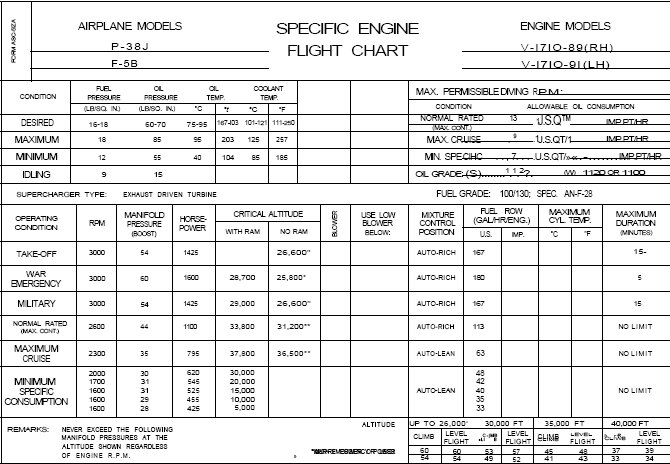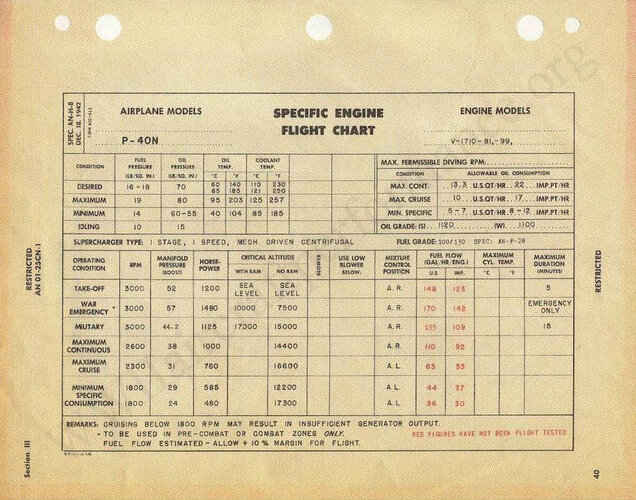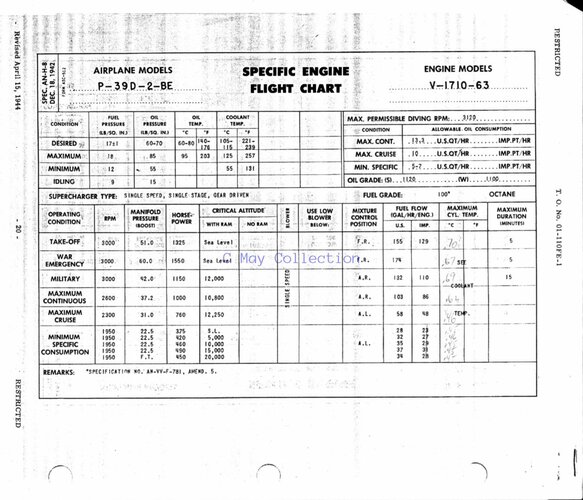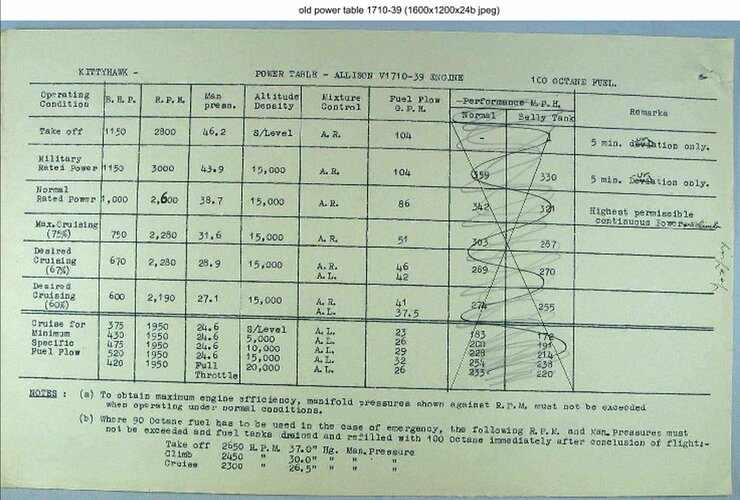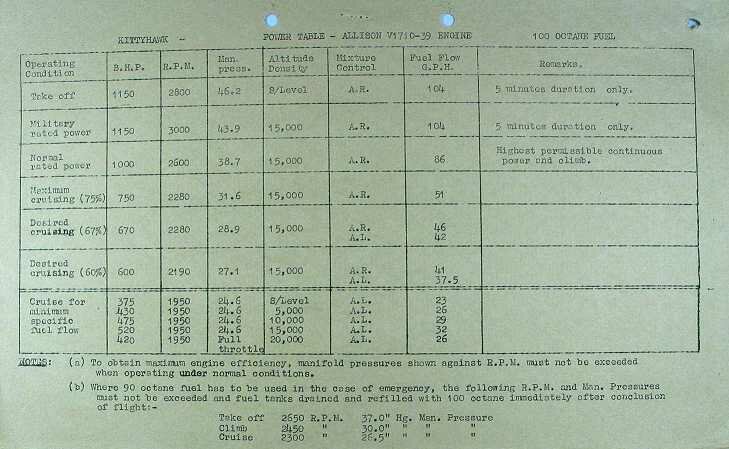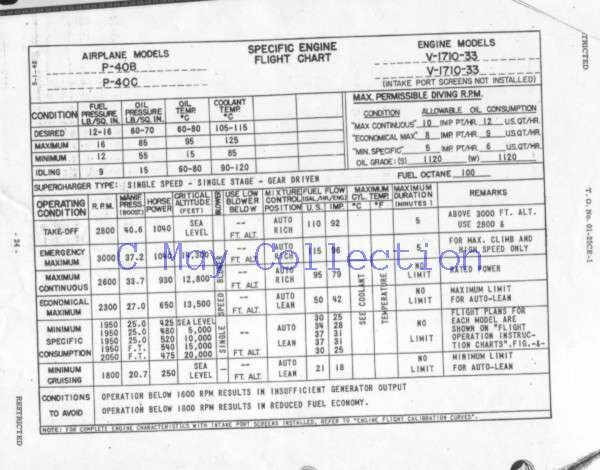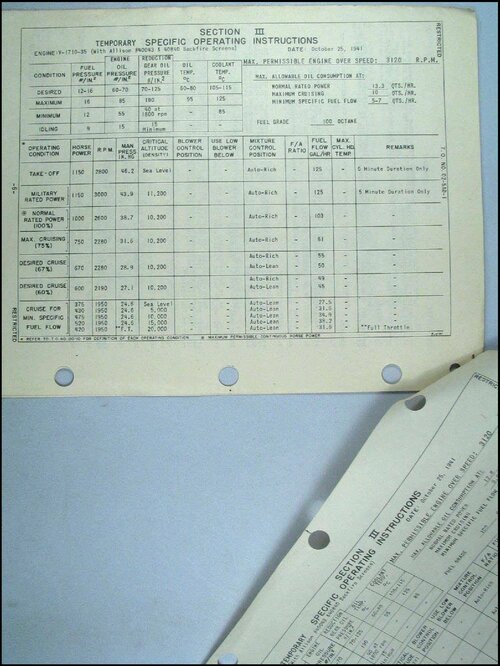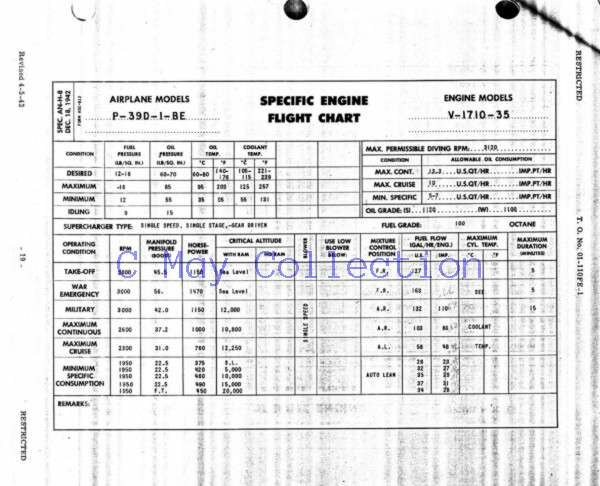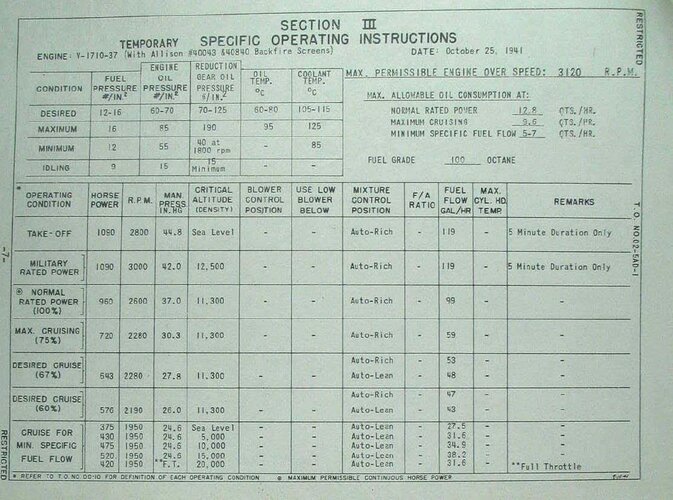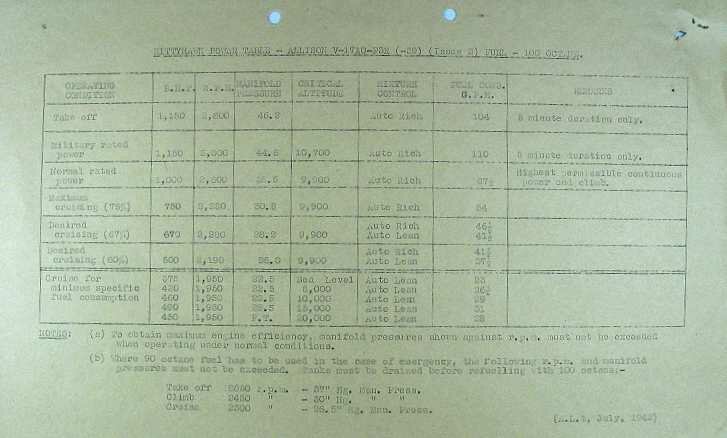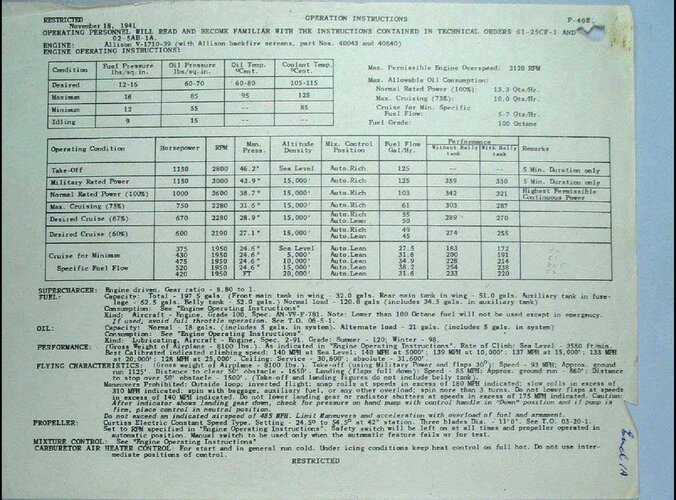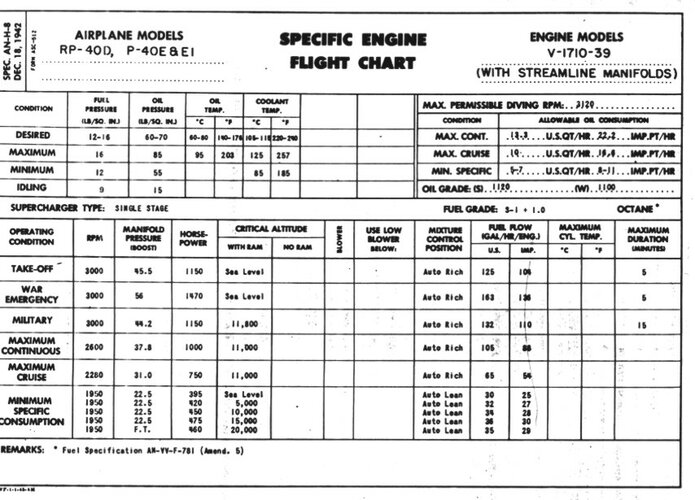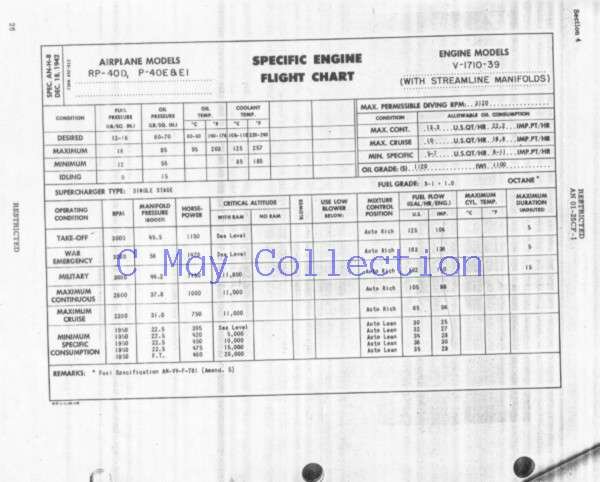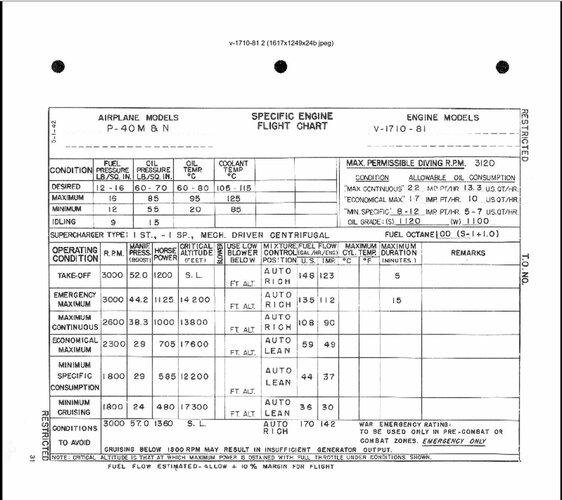Hi Scott,
Interesting, I didn't know that distinction!
I was in fact not remembering this perfectly right ... the terms were "AUTO RICH" on early models and, on later models, "RUN" with an override position "EMERGENCY FULL RICH".
So that sort of aligns with the common use you describe, though both carburettor types are described as "injection-type carburetors" on p. 11 of the manual. The older variant is a "two-position carburetor", which has an "AUTO LEAN" setting to complement the "AUTO RICH".
There are also two types of automatic manifold pressure regulator. The older one only works above 41" Hg boost pressure, and the newer covers everything goes to 20" Hg.
My guess was that the settings we see on the R-2600-8 versus the GR-2600-A5B-0 probably indicate a similar change in the engine-associated hardware between the two models.
Regards,
Henning (HoHun)
Auto Rich is usually a pressure carb setting, Full Rich is usually a manual mixture setting.
Interesting, I didn't know that distinction!
I was in fact not remembering this perfectly right ... the terms were "AUTO RICH" on early models and, on later models, "RUN" with an override position "EMERGENCY FULL RICH".
So that sort of aligns with the common use you describe, though both carburettor types are described as "injection-type carburetors" on p. 11 of the manual. The older variant is a "two-position carburetor", which has an "AUTO LEAN" setting to complement the "AUTO RICH".
There are also two types of automatic manifold pressure regulator. The older one only works above 41" Hg boost pressure, and the newer covers everything goes to 20" Hg.
My guess was that the settings we see on the R-2600-8 versus the GR-2600-A5B-0 probably indicate a similar change in the engine-associated hardware between the two models.
Regards,
Henning (HoHun)

